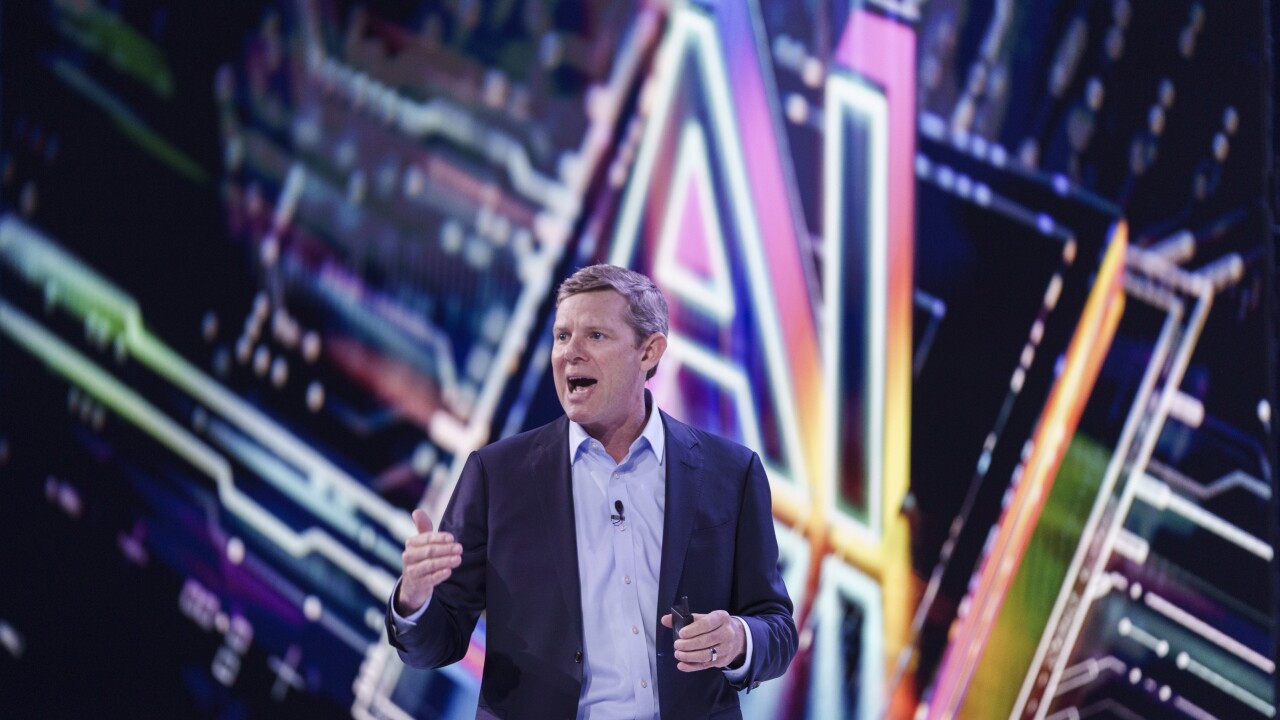
Female CIOs are still rare among the largest U.S. banks. When Tracy Kerrins became head of technology, the equivalent of the CIO role, at Wells Fargo in April, she joined a small group that includes Lori Beer at JPMorgan Chase and Judy Dinn at TD Bank. Kerrins reports to CEO Charlie Scharf and oversees 40,000 technologists.
In recent years, Kerrins was CIO of Wells Fargo's consumer bank.
One project she led was the development of the technology behind Flex Loan, a digital-only, small-dollar loan the bank launched in November 2022. Customers apply for the loan through the company's mobile banking app. They can borrow $250 or $500 for a flat fee, and get the money in their Wells Fargo account immediately, according to the bank.
"We hadn't done that before," Kerrins noted. "It was a big lift, but it wasn't as big as it could have been because of our platform architecture. We were able to shave months off of the timeline because we built that using reusable components – build once, use many." This will be used again to launch future products.
Kerrins plans to improve customer experience with the use of personalization technology.
"Fargo [Wells Fargo's recently launched virtual assistant] is a good example of that," she said. "That's our first big public foray into artificial intelligence. It's a true virtual assistant, not a chatbot, that hopefully uses all the insights and information we know about you as a customer to help provide better bank experiences. We still have a lot of opportunities to do that across all the channels, all of the business lines."
The bank is also using personalization in Vantage, its platform for commercial clients. A third way it's using personalization is in a fraud detection program under development that will analyze consumer behavior to suss out foul play.
Kerrins' team is working on application programming interfaces Wells Fargo can use to offer payments-as-a-service to partners. Wells Fargo was an early adopter of FedNow. It's also part of the Paze and Zelle consortia.
She's also guiding the bank's
"We're early on, but making good progress on that journey." The bank is not trying to do a "lift and shift," she said, but trying to modernize applications before migrating them over.
"That's a little different than what some of those who've gone before us have done," she said. "We're hoping that'll be an advantage for us. It'll take us a little longer, we'll go a little slower, but we think we're doing it the right way for the company."
Kerrins has mixed feelings about the frenzy around generative AI.
"I think there's always a wave of hype," she said. "I think it will die down a little bit. Part of our view is we want it to be business-case/use-case driven. We're not developing AI solutions just to develop AI solutions. There are a lot of interesting use cases around code development. I think that could be part of it. Developers don't want to work in places where they may have to develop or build code that in other places is auto generated through AI solutions. It's something we're absolutely looking at and I think we have to look at in order to remain competitive."
Generative AI could help write code comments, in other words, programmer-readable explanations or annotations in source code, to save developers time.
Kerrins, who hired 1,000 tech employees in consumer technology in 2022, wants to make Wells Fargo technology a place where the best engineers in the world want to work.
"We know we're not there, but we have a plan and we're pretty close," she said. She said she hopes to make it easier for developers to "actually deliver solutions and not get bogged down in process."
"I already think we have the best technologists in the world working here at Wells Fargo," she said.





